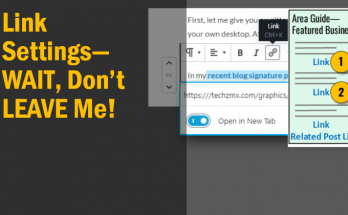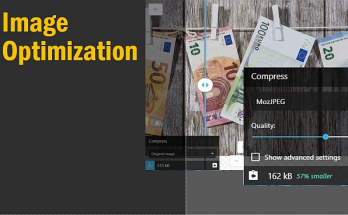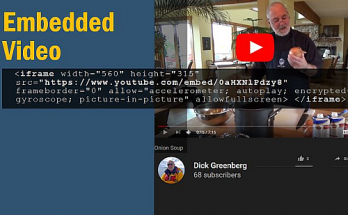When you write a blog post, you have opportunity to share helpful other pages with your readers. To do this, you insert hyperlinks in your text so that they can easily click the link and jump to the new page. This is something I’m sure you realize already! What you may not realize though is that there are some very common mistakes people make and after this blog post, you can take yourself off of that list.
Mistake #1 – You Can’t See the Hyperlink
For many bloggers, they are working with a page theme where fonts and colors are predetermined for them. If you have any control over your theme choices, make sure that you pick a hyperlink color that makes the text pop out. If the reader can’t tell that text is different color, they will pass right over the link. If you are blogging on ActiveRain, the recent theme update created this kind of problem. Hopefully if you are reading this post in the future, the ActiveRain devs will have this updated. In the meanwhile, you can override the color of the hyperlink by selecting the hyperlink text and then choose a different color from the blog toolbar when you are composing your blog post.
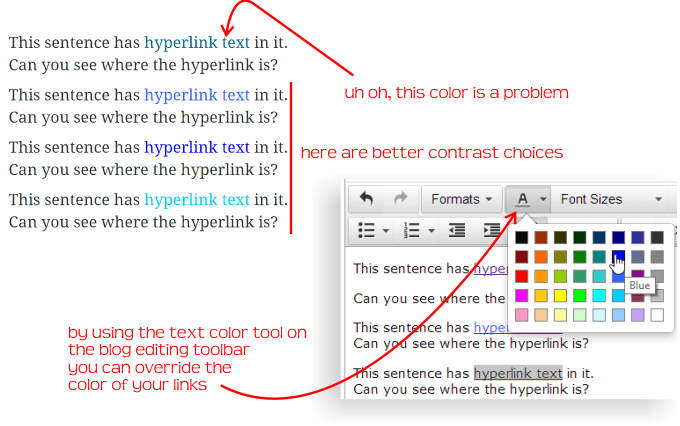
Mistake #2 – You Send Them Away From Your Content
Sometimes you link to your own pages, sometimes you link to others. When a person clicks on a hyperlink, one of two things will happen. The new content will replace the page they are currently viewing (YOUR content) or the new content will show up in a new window or tab on their browser. There are valid circumstances for you to choose both types of results. If your reader has made it to the end of your post and you are giving them links to other related articles that you have written, those links generally use the same window. However, if you are linking to something right in the middle of your blog post, you should have that link open up the new content in a new window. EVERY link that is to an outside source should open up in a new window. Imagine that you have just mastered the SEO of your post with the result that someone finds you via a Google search and then YOU SEND them off to wikipedia with a supplemental info link (using the same window) and they just surfed away from you possibly never to return. It is easy to control your hyperlink action type, when you create a hyperlink, look for the option that says “Open link in” and the choices are “none” (i.e. use same window) or “new window”. Based on the suggestions above, you know will know which choice to make.
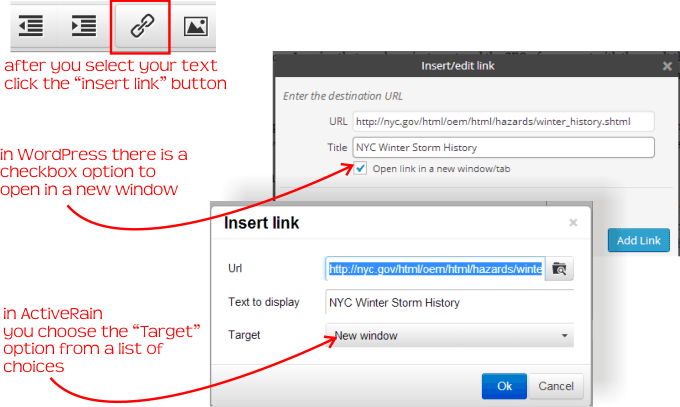
Mistake #3 – Your Anchor Text Strategy Might Be Hurting You
When you send somebody off to another page, you get to choose which words to highlight to attach the link action to. This is what we call the “Anchor Text”. In terms of SEO, anchor text has value. It is your opportunity to label what the user will get when they go there. However, Google over the years has refined their analysis of anchor text and is now recognizing when somebody is playing the system. If every inbound link to a page is identical and stuffed with keyword matches for search terms, Google’s red flag is going to go up. A natural array (organic array) of inbound links is not all going to be identically worded. Your first task is to identify which pages in your web portfolio are hot SEO targets. Which pages have you created are the SPECIFIC answer to someone’s search question? SEO rule #1 is to provide valuable content – create a page that definitively answers what the person was looking for. Good SEO is directly related to a positive human experience. Google keeps refining the search algorithms to give the best answer. Work towards a quality answer to a question and you have a valuable landing page that Google will want to use! Now let’s get back to “anchor text”. One of the metrics Google reads is inbound links. As one page on a website links to another page of related content, it is in essence referring the reader to that other page as something of value (otherwise, why bother with the link?). Google takes note of that referral as a *possible vote in its favor. (*meaning it wasn’t a gamed vote such as a link farm or other blackhat means)
Let’s take a destination page and work backwards from it. Janis Borgueta has a WordPress site with various pages grouping posts by category and tag. If we take one page of posts tagged with “Things to Do In Newburgh NY”, we can see how this might be a good answer to someone’s search query. However, as Janis builds links to this page from other related articles, besides the obvious keyword rich one above, she should consider varied anchor text labels for the links.
Perhaps like these:
Looking for something to do this weekend, Newburgh has lots to offer.
This is just one of many things Newburgh has to offer, I have a collection of other posts that you will find interesting.
So if you mix up your anchor text it will be more natural array and Google will be less inclined to flag it for SEO over-optimization and stuffing of keywords. It is good to use the keyword rich anchor text sometimes but just watch it doesn’t become something to Google to mark with negative points. If you are interested to read more about this, Moz has an article that dives into this deeper.
Remember: write the QUALITY content FIRST – As Google gets smarter and smarter Panda, Penguin, Hummingbird and beyond – It will only offers pages of value and thus it matters not how good your Anchor Text is if your landing page is not a better destination than the rest of the options available!
